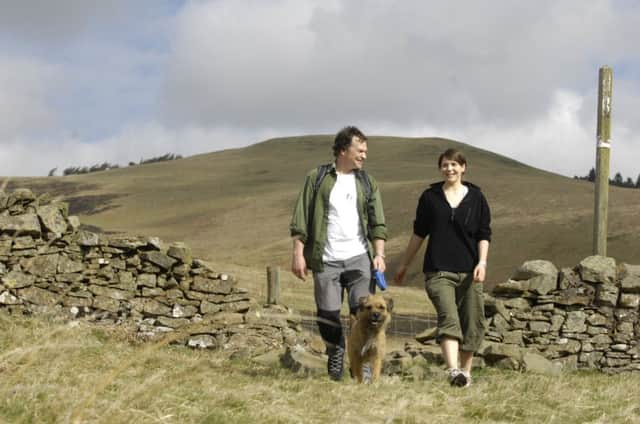Spirit of access laws must be respected


In a village hall in Bridge of Earn last month, plans were outlined for a new, long-distance path from Killin to St Andrews. Three Saints Way is being promoted by local MSP Roseanna Cunningham, a keen walker who has seen the benefits outdoor recreation can bring to communities.
Leaving aside the health benefits of a more active population, walkers also bring economic cheer, spreading cash among shops and hotels, often keeping these businesses going amid falling rural populations.
Advertisement
Hide AdAdvertisement
Hide AdThe new trail is being developed by volunteers and businesses using existing paths and bringing in partners to add their support. It follows a growing tradition over the past decade of path developments around Scotland. For example, the Ayrshire Coastal Path, set up by Ayr Rotary Club, has inspired others in north Ayrshire to continue the route along the coast. This will link into the Inverclyde Coastal Path, another initiative led by the council, local enterprises and Inverclyde Ramblers, among others. Kintyre Way, Rob Roy Way, Dava Way, East Highland Way and many others were the brainchilds of residents who recognised the economic benefits that would result.
These new trails are based on the public right of access established in the Land Reform (Scotland) Act 2003, one of the first major pieces of legislation passed by the Scottish Parliament which is widely acknowledged to have been a great success. While the government’s Land Reform Review Group recently found shortcomings with the right-to-buy sections of the legislation, the access section was found to be generally working well. But is this really the case in all aspects?
It’s true that the majority of landowners have accepted, and even welcomed, access rights; some have even made efforts to develop paths and other facilities. But there are two problems we at Ramblers Scotland have concerns about, which risk eroding public confidence in the legislation.
First of all, while local communities are crying out for new paths, the actual expansion of path networks is frustratingly slow. Scotland’s paths have long been ploughed up or developed over and there’s a need, especially in lowland areas, for more off-road routes to enable people to enjoy the countryside or to travel on foot or by bike to school, the shops or to work. Core paths plans have been drawn up by every access authority to promote a framework of paths for all users. However, more than 95 per cent of these core paths existed already, and the opportunity was not taken to establish new routes where needed. And, where new trails are being built, this can be a long and frustrating process if a landowner decides to put a stop to a path, simply by refusing to reach any agreement. Even organisations like Sustrans, who are funded by government to build new routes, can find projects stalled for years.
It is inconceivable a new road would be held up for decades by a single landowner refusing permission for a road across their land. Yet even though the public interest has been demonstrated, local authorities seem reluctant to use even the threat of compulsory purchase powers to get paths built.
The second issue is the major difficulty in resolving long-running access issues when a landowner is deemed to be causing an obstruction and refuses to remove it. Local authorities are reluctant to legally challenge recalcitrant landowners, as they fear being dragged into lengthy and costly court cases with QCs lined up on either side – and who can blame them? We have proposed a form of arbitration to try to free this log jam without getting as far as the sheriff court, but it’s a pity certain mavericks are letting the side down.
The underlying premise of the access legislation is that rights come with responsibilities, and walkers and others must act responsibly. But there are also reciprocal responsibilities on landowners to be responsible, and manage their land in a way which enables people to take access.
It seems to us there are growing numbers of land managers who are forgetting their responsibilities, and this is demonstrated in the glacial pace of expansion of our path network and the problems with getting access issues resolved. The renewed focus on land reform in Parliament during the next year will be a good opportunity to shine a light on these matters.
• Helen Todd is campaigns and policy manager with Ramblers Scotland